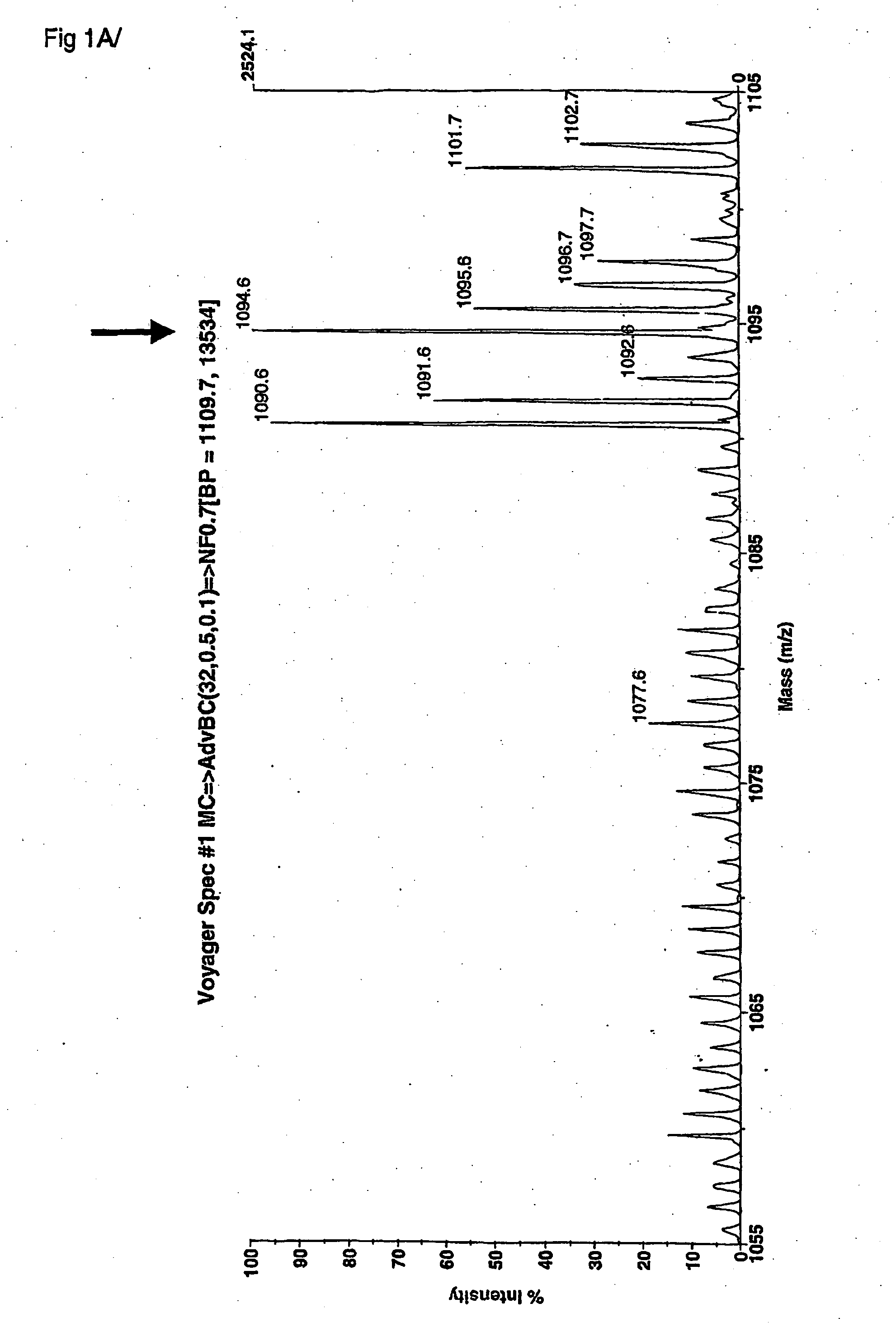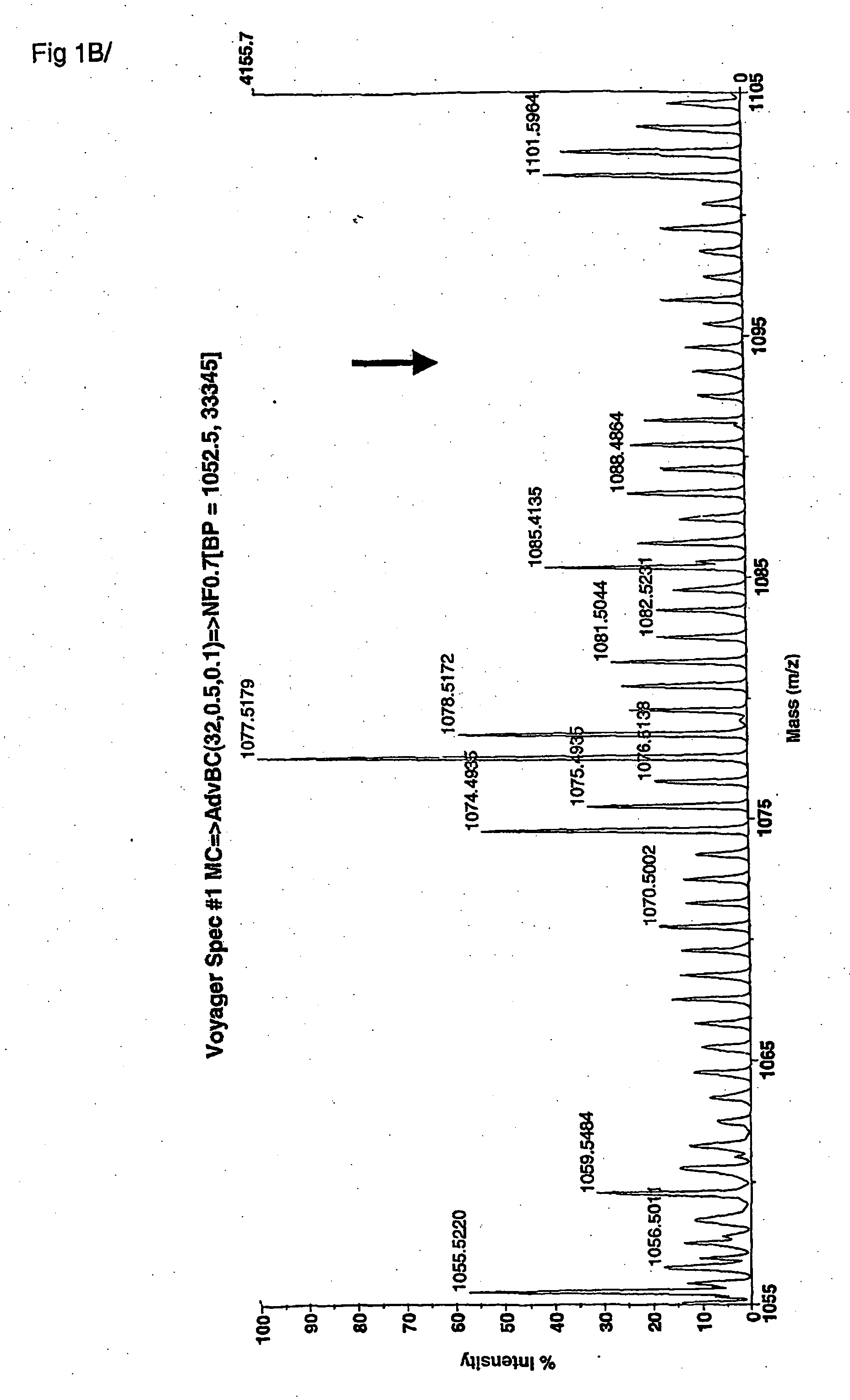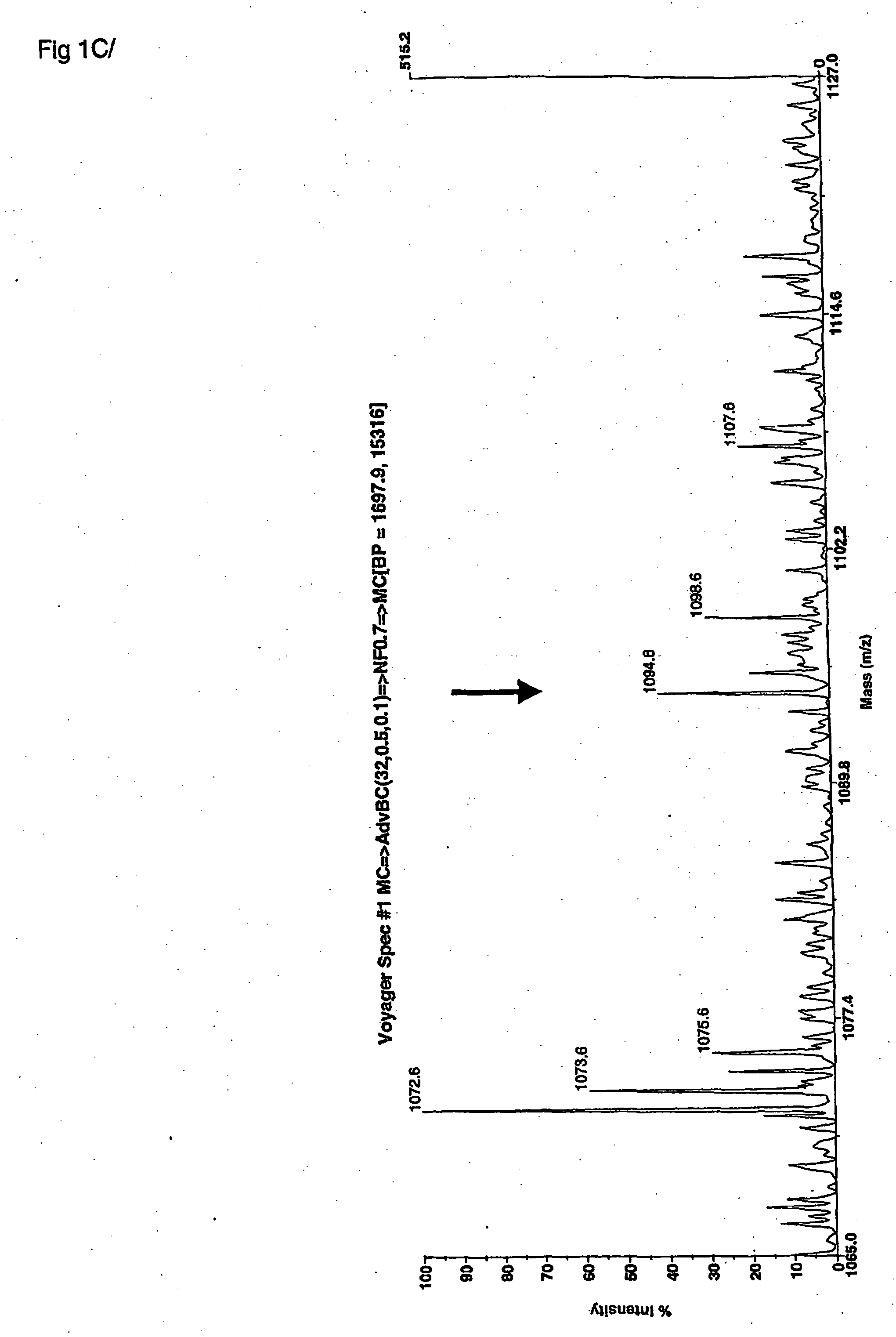Elastin peptide fingerprints and analysis methods for mmp12 related to copd
a technology of elastin peptide and copd, which is applied in the field of protein or peptide fingerprints, can solve the problems of insufficient recovery, significant limitations in the identification of inability to identify low abundance/low molecular weight proteins,
- Summary
- Abstract
- Description
- Claims
- Application Information
AI Technical Summary
Problems solved by technology
Method used
Image
Examples
example
[0219] The peptide fragments of elastin, which are the result from the enzymatic digestion of human elastin by human MMP 12, were first identified under laboratory conditions using a model in vitro system for generating unit length peptides and peptide fingerprints of the proteolysis of elastin by this MMP12 enzyme. These peptides were then collected and fractionated on a series of chromatography columns in order to isolate the peptides for identification. The peptides were then identified as unit atomic mass entities using MALDI-TOF mass spectrometry spectra. For each fraction of column separated peptides, the mass of each entity, and the mass intensity of each entity were recorded and stored into databases. A statistical software program was used to analyze the profile of atomic mass unit identities from all fractions analysed by MS. A consensus atomic mass identity was assigned for a set of landmark elastin peptides associated with MMP12 enzymatic degradation. A first non-inclusi...
PUM
 Login to View More
Login to View More Abstract
Description
Claims
Application Information
 Login to View More
Login to View More - R&D
- Intellectual Property
- Life Sciences
- Materials
- Tech Scout
- Unparalleled Data Quality
- Higher Quality Content
- 60% Fewer Hallucinations
Browse by: Latest US Patents, China's latest patents, Technical Efficacy Thesaurus, Application Domain, Technology Topic, Popular Technical Reports.
© 2025 PatSnap. All rights reserved.Legal|Privacy policy|Modern Slavery Act Transparency Statement|Sitemap|About US| Contact US: help@patsnap.com



